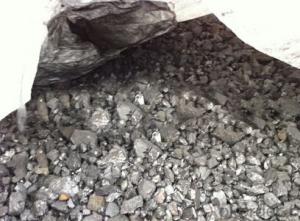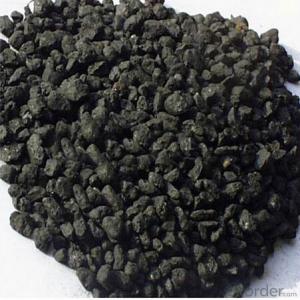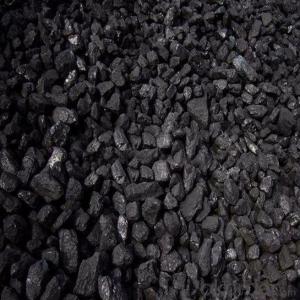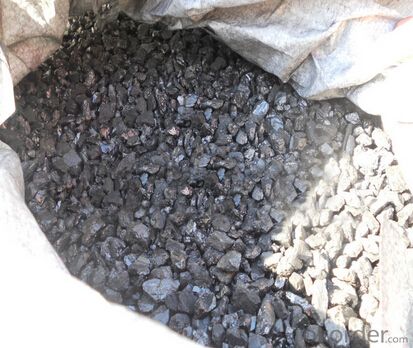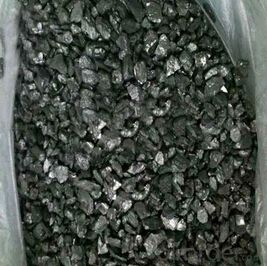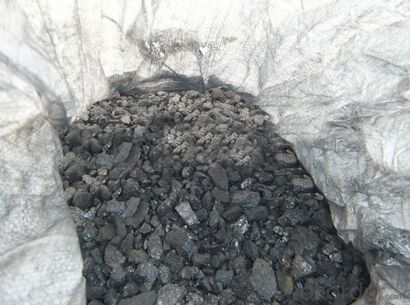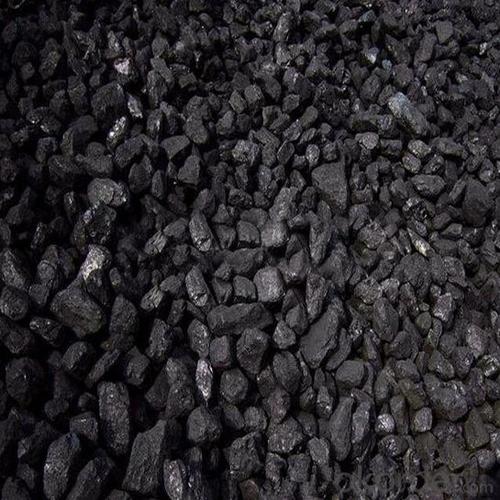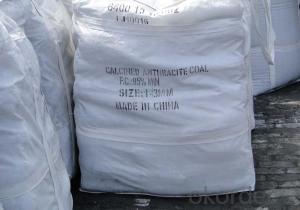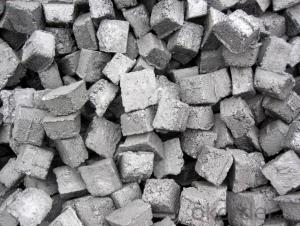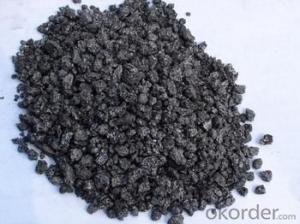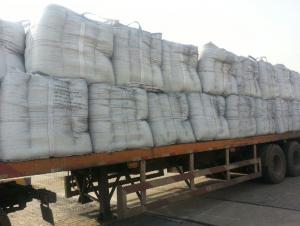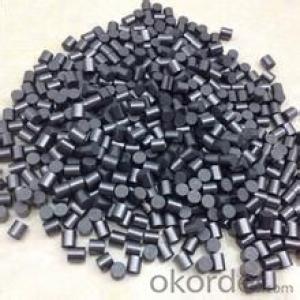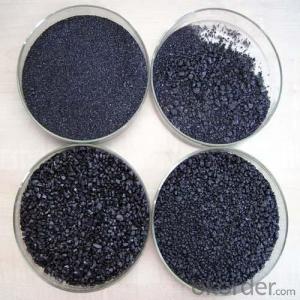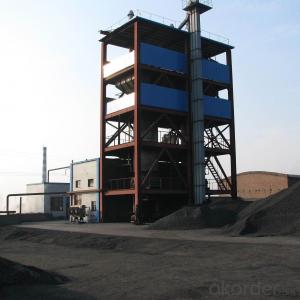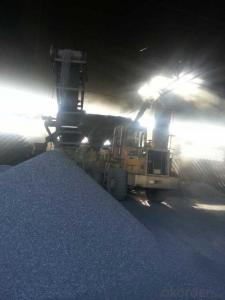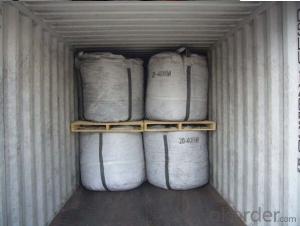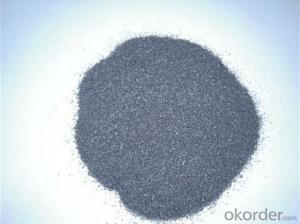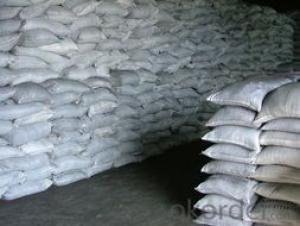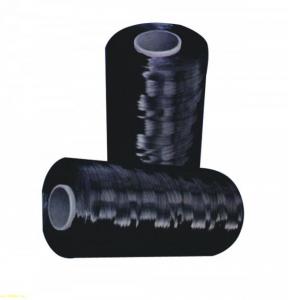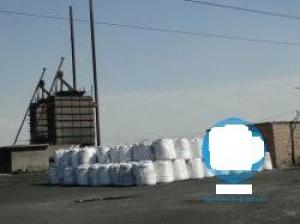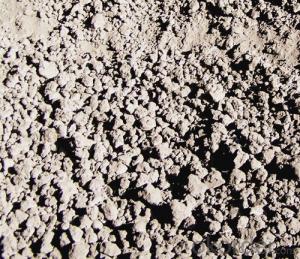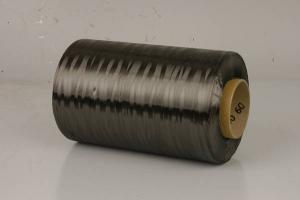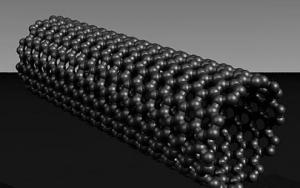Calcined anthracite coal Recarburizer 90%-98.5%for Iron casting
- Loading Port:
- Dalian
- Payment Terms:
- TT OR LC
- Min Order Qty:
- 10 m.t
- Supply Capability:
- 500000 m.t/month
OKorder Service Pledge
OKorder Financial Service
You Might Also Like
Specifications of Calcined anthracite coal:
Calcined anthracite coal/Recarburizer 90%-98.5%for Iron casting
C:90%min
S:0.36%max
Mositure:0.6%max
Anthracite Coal for more than 10 years
Data Sheet:
Fixed carbon | 90%min |
Ash content | 8.0%max |
Vol . Matter | 2.0%max |
Sulphur content | 0.36%max |
Moisture content | 0.6%max |
Size | As per customers' requirement |
packing | 25kg paper bag on the pallet or 10kg paper bag shrieked wrapped on the pallet or 1MT big bag or other packing as required |
delivery time | 20days or depends on the order quantity |
Supply ability | 3000 Metric Ton/Metric Tons / Month |
Payment terms | L/C at sight or T/T |
Size: 1-4mm, 1-5mm, 3-8mm, 8-20mm (as per customers’ requirement)
Usage: Gas Calcined Anthracite/GCA is carbon raiser, widely used in steel-making, metallurgical.
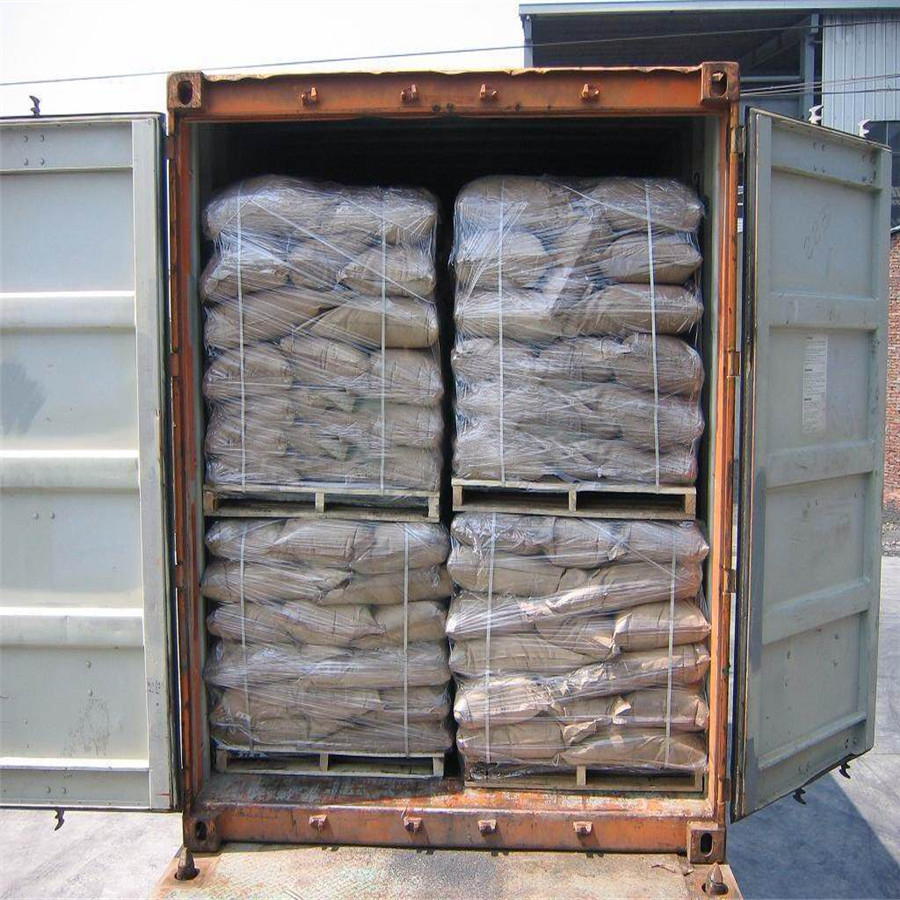
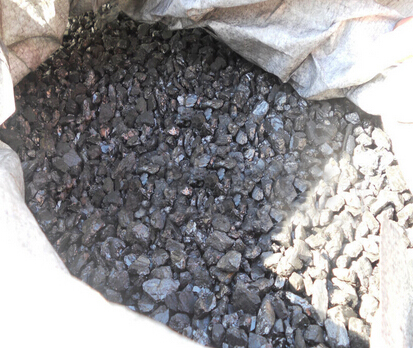
- Q: How does carbon affect the formation of droughts?
- Carbon does not directly affect the formation of droughts. However, increased carbon dioxide levels resulting from human activities contribute to climate change, which can lead to changes in precipitation patterns and increased likelihood of drought conditions in certain regions.
- Q: What are the effects of carbon emissions on the Earth's temperature?
- Carbon emissions, particularly carbon dioxide (CO2), have a significant impact on the Earth's temperature through the greenhouse effect. The greenhouse effect refers to the process by which certain gases in the Earth's atmosphere trap heat from the sun and prevent it from escaping back into space, thus warming the planet. When carbon emissions are released into the atmosphere, they act as a blanket, trapping more heat and exacerbating the greenhouse effect. This leads to an increase in global temperatures, commonly known as global warming. The primary source of carbon emissions is the burning of fossil fuels such as coal, oil, and natural gas for energy production, transportation, and industrial processes. The accumulation of carbon dioxide and other greenhouse gases in the atmosphere has resulted in a steady increase in global temperatures over the past century. This rise in temperature has numerous consequences for the Earth's climate system and ecosystems. One of the most immediate impacts of increased carbon emissions and global warming is the melting of polar ice caps and glaciers. As temperatures rise, ice melts at an accelerated rate, contributing to rising sea levels. This poses a significant threat to coastal areas, where increased flooding and erosion can occur, leading to the displacement of communities and loss of habitats for various species. Additionally, global warming disrupts weather patterns, leading to more frequent and intense extreme weather events. Heatwaves, droughts, hurricanes, and heavy rainfall events become more common, causing damage to infrastructure, agriculture, and human health. Changes in precipitation patterns also affect water availability and can lead to water scarcity in certain regions. The Earth's temperature directly influences ecosystems and biodiversity. Many species are highly sensitive to even small changes in temperature, which can disrupt their natural habitats, alter migration patterns, and impact reproductive cycles. These changes can ultimately lead to the extinction of certain species and disrupt entire ecosystems. Furthermore, the warming of the Earth's temperature can have cascading effects on various natural processes. For example, it can lead to the release of additional greenhouse gases from melting permafrost and the degradation of forests, further exacerbating global warming. In conclusion, the effects of carbon emissions on the Earth's temperature are profound and wide-ranging. Global warming caused by increased carbon dioxide levels leads to melting ice caps, rising sea levels, extreme weather events, disruptions to ecosystems, and potential loss of biodiversity. Addressing carbon emissions and working towards sustainable practices are crucial in mitigating these effects and ensuring a stable and habitable planet for future generations.
- Q: How is carbon used in the production of ink?
- Carbon is used in the production of ink in various forms, such as carbon black or activated carbon. Carbon black is a fine black powder that is derived from the incomplete combustion of petroleum products. It is commonly used as a pigment in inks to provide a deep black color. Carbon black particles are small and have a high surface area, which allows them to disperse evenly in the ink and provide a consistent color. Activated carbon, on the other hand, is a highly porous form of carbon that is produced by heating carbonaceous materials, such as wood or coconut shells, at high temperatures. It is used in ink production as a filter or purification agent. Activated carbon has a large surface area with numerous microscopic pores, which enable it to adsorb contaminants, impurities, and unwanted substances from the ink. This helps improve the quality and stability of the ink, ensuring a smooth and consistent flow. In addition to its use as a pigment and a purification agent, carbon is also utilized in ink production as a conductive material. Carbon-based inks are commonly used in applications that require electrical conductivity, such as printed circuit boards, sensors, or electronic devices. These inks contain carbon particles dispersed in a liquid medium, allowing them to be printed or deposited onto a substrate to create conductive pathways. Overall, carbon plays a crucial role in the production of ink by providing color, acting as a purification agent, and enabling electrical conductivity. Its versatile properties and wide range of applications make it an essential component in the ink manufacturing process.
- Q: How does carbon impact the ozone layer?
- The ozone layer is not directly affected by carbon, but carbon-containing compounds such as CFCs can greatly impact it. When CFCs are released into the atmosphere, they can reach the stratosphere and break down due to UV radiation, releasing chlorine atoms. These chlorine atoms then destroy ozone molecules catalytically, causing the depletion of the ozone layer. The depletion of the ozone layer is a crucial environmental concern because it allows more harmful UV radiation from the sun to reach the Earth's surface. Increased UV radiation can have negative effects on human health, including skin cancer, cataracts, and weakened immune systems. It can also harm ecosystems by damaging phytoplankton, which are vital to the marine food chain, and affecting the growth of plants and crops. To address this issue, the international community has taken measures to decrease the production and usage of substances that deplete the ozone layer, including CFCs. The Montreal Protocol, an international environmental agreement, has successfully phased out the production of CFCs and other harmful substances. This has contributed to the recovery of the ozone layer, although it remains a long-term process. In conclusion, carbon itself does not directly impact the ozone layer. However, carbon-containing compounds like CFCs, when released into the atmosphere, can cause the destruction of the ozone layer. Efforts to reduce the production and usage of these substances that deplete the ozone layer have been essential in safeguarding the ozone layer and mitigating the harmful effects of increased UV radiation.
- Q: What is carbon fiber reinforced plastic?
- Carbon fiber reinforced plastic (CFRP) is a composite material made up of carbon fibers embedded in a polymer matrix, typically epoxy resin. It combines the lightweight and high strength properties of carbon fibers with the versatility and durability of plastic. CFRP is widely used in various industries, including aerospace, automotive, and sports, due to its exceptional strength-to-weight ratio, resistance to corrosion, and excellent stiffness.
- Q: How much carbon does it take for 4 people to barbecue?!
- Hello The amount of charcoal is according to the number, the number of barbecue barbecue food and other circumstances, the amount of each person is different, generally 6 pounds of charcoal enough for 3-5 to use, recommended to get for a little extra, so is not enough, the charcoal is not expired, can not run out of the next and then, put in the house you can also clean the indoor air.
- Q: How is carbon used in the production of paints and coatings?
- Carbon is commonly used in the production of paints and coatings as a pigment or filler. It can be derived from various sources, such as carbon black or activated carbon, and is added to paint formulations to provide color, opacity, and UV resistance. Additionally, carbon-based materials can be used as additives to enhance the durability, adhesion, and corrosion resistance of coatings.
- Q: What is carbon offsetting in the travel industry?
- Carbon offsetting in the travel industry refers to the practice of compensating for the carbon emissions produced during travel activities by investing in projects that reduce or remove an equivalent amount of greenhouse gases from the atmosphere. As travel contributes significantly to global carbon emissions, carbon offsetting has emerged as a way for individuals and businesses to take responsibility for their environmental impact and strive towards more sustainable practices. When individuals or companies choose to offset their travel emissions, they calculate the carbon footprint of their trip based on factors like distance traveled, mode of transport, and fuel consumption. This calculation helps determine the amount of carbon dioxide equivalent emitted during the journey. To offset these emissions, they then invest in projects that reduce or remove the same amount of greenhouse gases from the atmosphere, such as renewable energy projects, reforestation efforts, or energy efficiency initiatives. The concept of carbon offsetting aims to achieve carbon neutrality, where the emissions produced are balanced by an equivalent reduction or removal of emissions elsewhere. By investing in offset projects, travelers and travel companies can effectively mitigate their environmental impact and contribute to overall efforts in combating climate change. Carbon offsetting in the travel industry not only helps reduce the carbon footprint of individual trips but also encourages the development of sustainable practices within the tourism sector. It provides travelers with the opportunity to minimize their environmental impact by supporting projects that promote renewable energy, conserve biodiversity, or improve local communities' livelihoods. However, it is essential to ensure that carbon offset projects are credible and deliver genuine emission reductions. Verified standards and certifications, such as the Gold Standard or Verified Carbon Standard, help ensure the integrity and transparency of offset projects. It is also important to prioritize efforts in reducing emissions directly, such as using more fuel-efficient transportation or opting for low-carbon alternatives, before relying solely on offsetting. In conclusion, carbon offsetting in the travel industry allows individuals and businesses to take responsibility for their carbon emissions by investing in projects that reduce or remove greenhouse gases. It is a proactive approach towards minimizing the environmental impact of travel and promoting sustainable practices within the tourism sector.
- Q: What is the relationship between carbon emissions and deforestation?
- The relationship between carbon emissions and deforestation is that deforestation contributes significantly to carbon emissions. When trees are cut down or burned, the stored carbon within them is released into the atmosphere as carbon dioxide (CO2), a major greenhouse gas. This process directly contributes to climate change and global warming. Additionally, deforestation reduces the Earth's capacity to absorb CO2 through photosynthesis, further exacerbating the carbon emissions problem. Therefore, reducing deforestation is crucial in mitigating carbon emissions and combating climate change.
- Q: What are the applications of carbon nanowires?
- Due to their unique properties and characteristics, carbon nanowires find wide-ranging applications across various fields. Some of the main uses of carbon nanowires include: 1. Electronics: Carbon nanowires serve as conducting channels in electronic devices like transistors and interconnects. Their small size, high electrical conductivity, and ability to handle high current densities make them ideal for nanoelectronics. 2. Energy storage: Carbon nanowires prove useful in energy storage devices such as batteries and supercapacitors. Their excellent electrical conductivity and high surface area enable efficient charge and energy storage, leading to enhanced performance and longer lifespan. 3. Sensors: Carbon nanowires function as sensing elements in different types of sensors. Their high sensitivity to temperature, pressure, or gas concentration changes makes them suitable for applications in environmental monitoring, healthcare, and industrial sensing. 4. Biomedical applications: Carbon nanowires hold promise in biomedical applications, including drug delivery systems and tissue engineering. They can be modified with specific molecules to target and deliver drugs to particular cells or tissues. Additionally, their biocompatibility and high mechanical strength make them suitable for scaffolds in tissue engineering. 5. Nanoelectromechanical systems (NEMS): Carbon nanowires contribute to the construction of NEMS devices, which are miniature mechanical systems operating at the nanoscale. These devices find applications in sensing, actuation, and data storage, and carbon nanowires possess the necessary mechanical and electrical properties for their operation. 6. Nanocomposites: Carbon nanowires are capable of enhancing the mechanical, electrical, and thermal properties of various materials. They can reinforce polymers, ceramics, and metals, resulting in improved strength, conductivity, and heat dissipation in the resulting nanocomposites. 7. Optoelectronics: Carbon nanowires find utility in optoelectronic devices like photodetectors and light-emitting diodes (LEDs). Their ability to emit light, low electrical resistance, and high electron mobility make them suitable for applications in displays, lighting, and optical communications. In conclusion, the applications of carbon nanowires are diverse and expanding, with the potential to revolutionize fields such as electronics, energy storage, sensing, biomedicine, and more. Ongoing research and development in this field are expected to uncover even more exciting applications in the future.
Send your message to us
Calcined anthracite coal Recarburizer 90%-98.5%for Iron casting
- Loading Port:
- Dalian
- Payment Terms:
- TT OR LC
- Min Order Qty:
- 10 m.t
- Supply Capability:
- 500000 m.t/month
OKorder Service Pledge
OKorder Financial Service
Similar products
Hot products
Hot Searches
Related keywords
